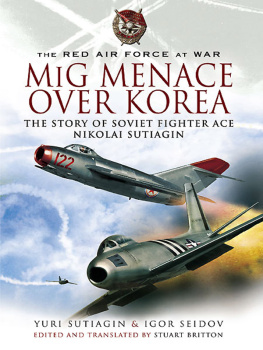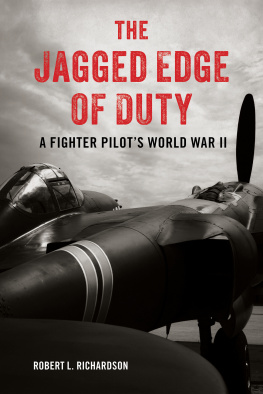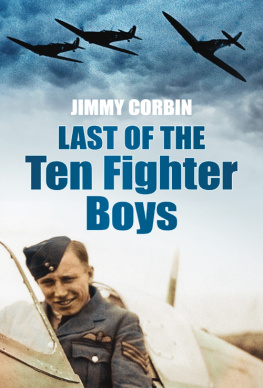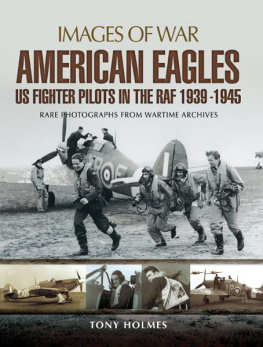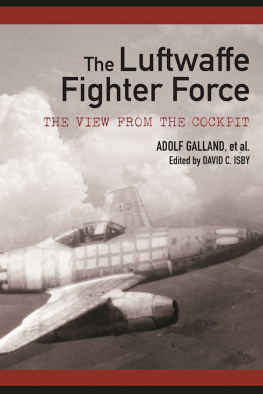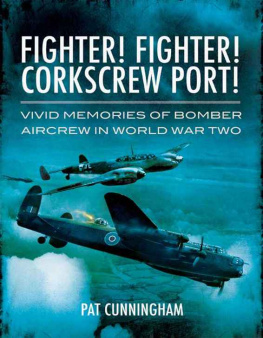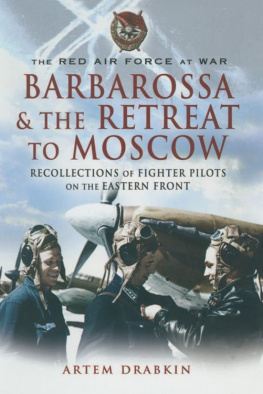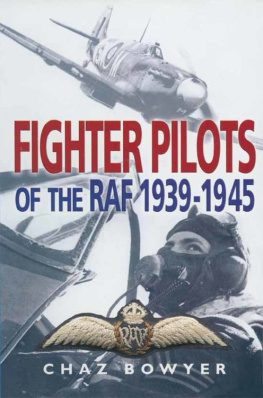Thank you for buying this ebook, published by NYU Press.
Sign up for our e-newsletters to receive information about forthcoming books, special discounts, and more!
Sign Up!
About NYU Press
A publisher of original scholarship since its founding in 1916, New York University Press Produces more than 100 new books each year, with a backlist of 3,000 titles in print. Working across the humanities and social sciences, NYU Press has award-winning lists in sociology, law, cultural and American studies, religion, American history, anthropology, politics, criminology, media and communication, literary studies, and psychology.
Officers in Fight Suits
Copyright 1996 by New York University
All rights reserved
Library of Congress Cataloging-in-Publication Data Sherwood, John Darrell, 1966-
Officers in flight suits : the story of American Air Force fighter pilots in the Korean War / John Darrell Sherwood.
p. cm.
Includes bibliographical references and index.
Contents: IntroductionAn absence of ring-knockers : the social
background and education of flight suit officersStick and rudder
university : training and the creation of the flight suit officer
MiG alley : air-to-air combat in KoreaHeadhunters and fighting
cocks : the fighter-bomber in KoreaThunderboxes and sabre
dancers : base life and recreation in the Korean WarLife after
KoreaEpilogue.
ISBN 0-8147-8038-5 (alk. paper)
1. Korean War, 1950-1953Aerial operations, American. 2. Fighter
pilotsUnited States. 3. United States. Air ForceHistory.
4. Fighter planesUnited StatesHistory. I. Title.
S920.2.U2S53 1996
951.9042dc20 96-10021
CIP
Manufactured in the United States of America
New York University Press books are printed on acid-free paper, and their binding materials are chosen for strength and durability.
10 9 8 7 6 5 4 3 2 1
Acknowledgments
During the Korean War, Air Force pilots received an air medal after every twenty-five combat missions flown, a Distinguished Flying Cross after a one hundred-mission war tour, and a Silver Star for heroism above and beyond the call of duty. During the course of the writing of this book, scores of individuals flew at least one combat mission in support of the campaign. Therefore, I will limit my acknowledgments to those who deserve an air medal or better for their efforts.
Special thanks to George Washington University (GWU) and the Center for Air Force History (CAFH) for research support.
The idea of a social history of Air Force pilots originated in James Hortons graduate seminar on social history at GWU. Among those who helped me fine-tune this project were William Becker, Edward McCord, and Richard Stott. Additionally, Cyndy Donnell and Michael Weeks graciously allowed me access to their computers on weekends for printing and editing purposes.
The research for this project was facilitated greatly by CAFH. During my year there as a visiting scholar, I received valuable advice from Vance Mitchell and Bernard Nalty. Special thanks to Eduard Mark and Vance Mitchell for allowing me to read and cite their unpublished manuscripts. For archival assistance, Walt Grudzinskas, Mark Ridley, and William Heimdahl were indispensable. Although heavily burdened by congressional and military requests for information, these staff members went out of their way to find obscure unit records, psychological reports, and base histories for me. They also allowed me to use their personal microfilm readers when the CAFH library readers were in use.
Other helpful archive staffs included those of the Suitland Reference Branch of the National Archives, and the Red Cross Archive in Washington, D.C. For photographs, thanks go to M. J. Bailey, Virginia Hagerstrom, and Jerry and Marty Minton.
As for libraries, the staff of the U.S. Army Library at the Pentagon allowed me to copy hundreds of pages of the Air Force Times for free, and Jacob Neufeld of CAFH sponsored me for a temporary Pentagon badge: a necessary prerequisite for admittance into that library. Additionally, the CAFH library and the Interlibrary Borrowing unit of GWUs Gelman Library deserve a fair share of kudos for tracking down a wide variety of dissertations, rare books, and Air Force-related fictional literature from the 1950s.
One of the highlights of this project was having the opportunity to interview actual flight suit officers. However, finding these gentlemen often proved very difficult. Fortunately, many pilot associations came to my aid. Special thanks to The Retired Officers Association and the Air Force Association for placing free advertisements in their respective magazines. Special thanks also to the Order of the Daedalions, the Mosquito Pilots Association, the F-86 Sabre Pilots Association, and the 58th Fighter Association for their assistance in tracking down Korean War pilots. Finally, a Distinguished Flying Cross should be awarded to every pilot who donated an afternoon or a morning to be interviewed. In particular, special thanks to M. J. Bailey, George Berke, Earl Brown, Hank Buttleman, Woodrow Crockett, Perrin Gower, James Hagerstrom, Howard Heiner, E. R. James, Kenneth Koon, Howard Leaf, Roy Lottinger, Jerry Minton, Robert Pomeroy, Robinson Risner, Curley Satterlee, Dewey Sturgeon, Frank Tomlinson, and Paul Turner.
Special recognition and a Silver Star are reserved for the people who freely donated substantial amounts of their time to this book. Yvonne Kinkaid, chief librarian of CAFH and the wife of an F-105 fighter pilot, obtained a beautiful office for me in which to conduct interviews, and she helped me find a host of documents. At the same time, she taught me many valuable lessons about Air Force etiquette and granted me access to her extensive military and government network for the sake of tracking down pilots. Without Ms. Kinkaid, my oral history project would never have gotten off the ground. Daniel Mortensen, a historian with the Air Staff History Office, and George Berke, a former F-84 pilot and English professor at the Air Force Academy, read through my entire manuscript and offered a wide range of suggestions. Dan Mortensen and George Berke, in particular, helped boost my morale during the difficult writing stage of the book.
Shirley Turner, a technical editor at Sandia National Laboratory, provided technical editing support for this project. Ronald Spector read through several drafts and assisted me in every way imaginable. His guidance enabled me to strike a careful balance between new and traditional military history. Randy Papadopoulos, military history colleague and swimming partner, listened to my research and writing problems every day between laps and came up with some very useful suggestions to improve my work. Timothy Bartlett, on a reconnaissance mission to Washington from his base at New York University Press, discovered this manuscript thanks to a little forward air control from the chairman of the history department, Ed Berkowitz. Bartlett has been a tireless supporter ever since.


